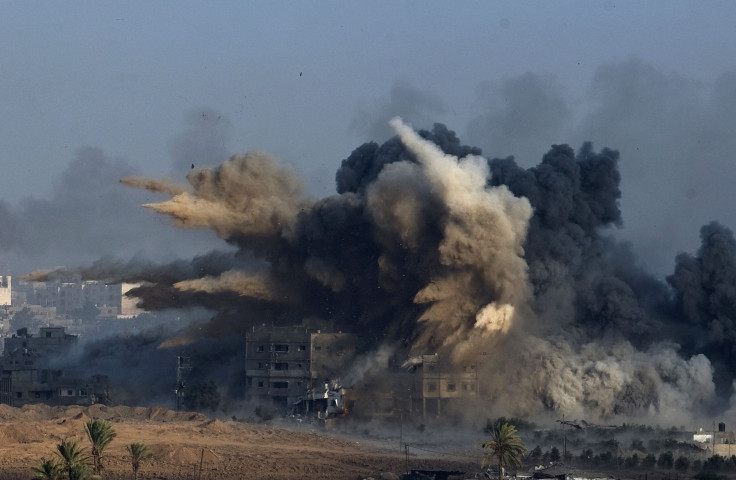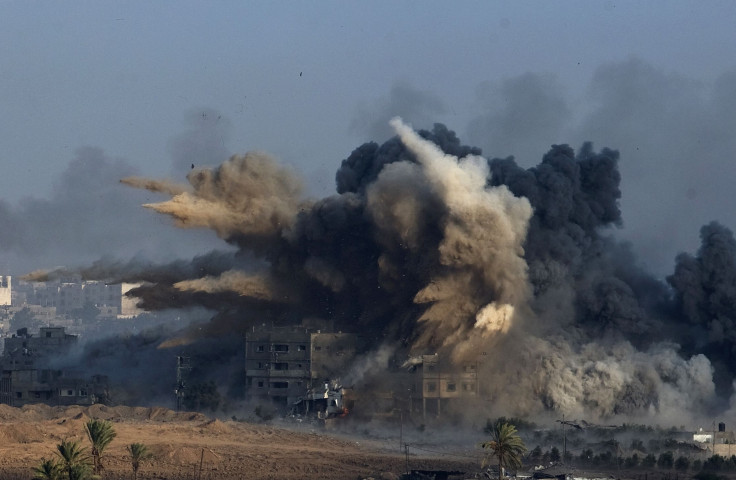What Is A Cease-Fire And What's The Difference Between An Armistice, A Cease-Fire And A Humanitarian Cease-fire?


Since Israel began its offensive in Gaza, and Hamas and other Palestinian factions increased rocket fire, there have been innumerable cease-fire proposals. Each side has stated its demands. Officials from the United States, United Nations and Egypt have attempted to broker a truce between the clashing governments, mostly to no avail. There have been press conferences, Security Council meetings, cabinet talks but the bombs and rockets continue to fall on Israel and Gaza.
So what exactly is a cease-fire and what does it mean for Israel and Gaza?
It isn’t an actual peace treaty or an armistice.
The basic definition of a cease-fire is really just a temporary truce between warring parties. It is a “total cessation of armed hostilities” between groups that are too far apart to even begin discussing a peace treaty.
The United Nations considers a cease-fire to be a type of agreement that is “more limited in scope” than an actual peace treaty or armistice. However, neither a cease-fire nor an armistice necessarily constitutes the end of the war. Depending on how long an armistice has been declared, the Hague Land War Regulations state that war may be resumed, if notice is given.
An armistice is a formal stopping of hostilities that’s negotiated between the warring parties themselves. The armistice can then lead to a peace treaty, which is an agreement bound by international law.
How come factions are allowed to violate cease-fires without any consequences?
Cease-fires, unlike peace treaties, do not fall under international law. They are often negotiated and agreed to with some amount of “good faith” attached. For example, Hamas Sunday said it had agreed to a U.N.-brokered 24-hour cease-fire but then continued to shoot rockets into Israel. They’re operating in bad faith, but it’s not violating a law.
According to data pulled from Visualizing Palestine, an infographic site about the Arab-Israeli conflict and Electronic Intifada, an independent news publication focusing on Palestine, since the last Israel and Palestine cease-fire in November 2012, Israel has violated the truce 191 times and the Palestinians have violated it 75 times.
What about a humanitarian cease-fire?
A humanitarian cease-fire is a pause in fighting so that civilians may have time to recuperate. Residents could leave their shelters to go back home, assess damaged and get food, water and medical supplies. It also gives aid workers the freedom to move around the area without the fear of getting caught in cross-fire.
For the Harry Potter fans out there, a humanitarian cease-fire is akin to Voldemort calling a one-hour truce during the “Battle Of Hogwarts,” saying, “I therefore command my forces to retreat. In their absence, dispose of your dead with dignity.”
So how does this apply to Israel and Hamas?
Each side has taken a turn in agreeing and rejecting a humanitarian cease-fire, which in the case of this conflict, has been free of any negotiating terms.
The rest of it, unfortunately, gets a lot more complicated. Israel and Hamas do not recognize each other as legitimate negotiating partners thus have not been able to come to an agreement on their own, which is a requirement for an armistice. As a result, other parties have had to mediate negotiations.
The Egyptian government July 15 proposed a cease-fire agreement, which Israel accepted and Hamas rejected. Unlike the humanitarian cease-fires, the Egyptian-brokered deal came with stipulations. The main point was that fighting should stop immediately and the border crossings between Egypt and Gaza would be opened “once the security situation becomes stable on the ground.” It then added, “Other issues, including security issues shall be discussed with the two sides.” This would have opened up the floor for possible armistice and peace treaty discussions.
However, Hamas said the group will not accept any cease-fire proposal without an end to the Israeli blockade that has been in effect since 2006.
As far as agreements go, Israeli Prime Minister Benjamin Netanyahu said Sunday a new deal in the works in Cairo is “the only game in town”.
Hamas has been very clear about its requirements for a cease-fire and its charter allows no space for negotiation. It is not giving up Gaza to the occupation.
“Initiatives, the so-called peaceful solutions, and the international conferences to resolve the Palestinian problem, are all contrary to the beliefs of the Islamic Resistance Movement [Hamas]. For renouncing any part of Palestine means renouncing part of the religion; the nationalism of the Islamic Resistance Movement is part of its faith, the movement educates its members to adhere to its principles and to raise the banner of Allah over their homeland as they fight their jihad.”
On the subject of border openings, the charter is also very clear. “The Arab states surrounding Israel are required to open their borders to the jihad fighters, the sons of the Arab and Islamic peoples, to enable them to play their role and to join their efforts to those of their brothers among the Muslim Brothers in Palestine.”
Whether it’s called a cease-fire or armistice or a peace treaty, it’s clear neither side looks like it is willing to compromise.
© Copyright IBTimes 2025. All rights reserved.






















